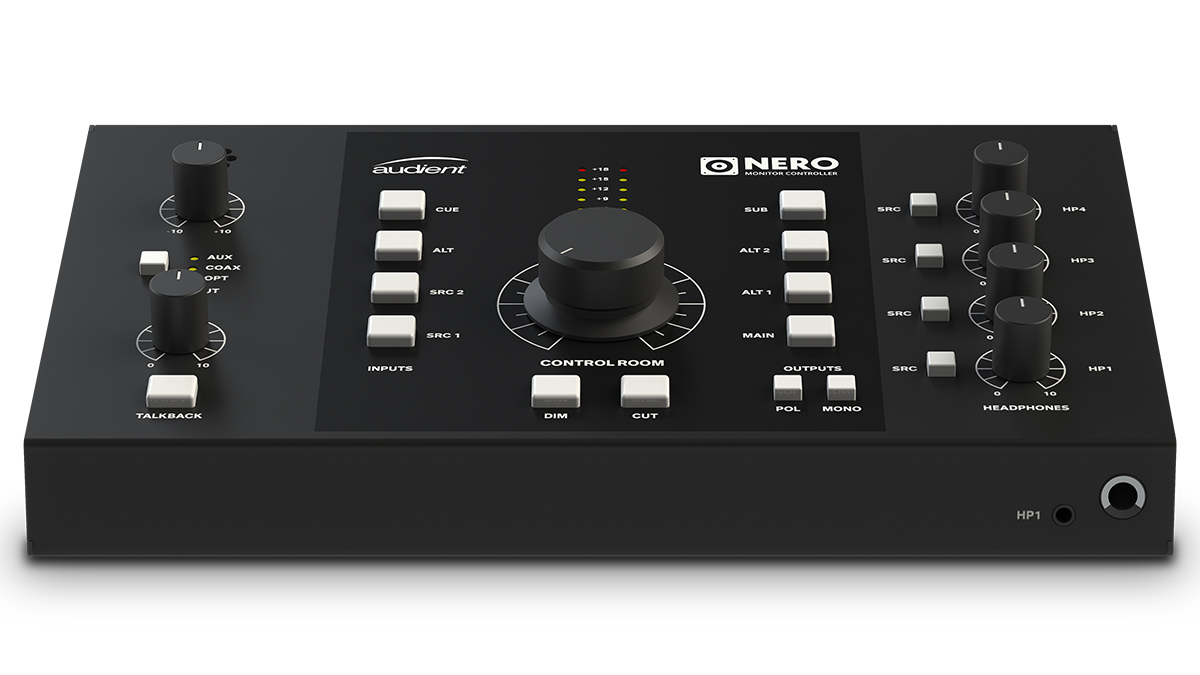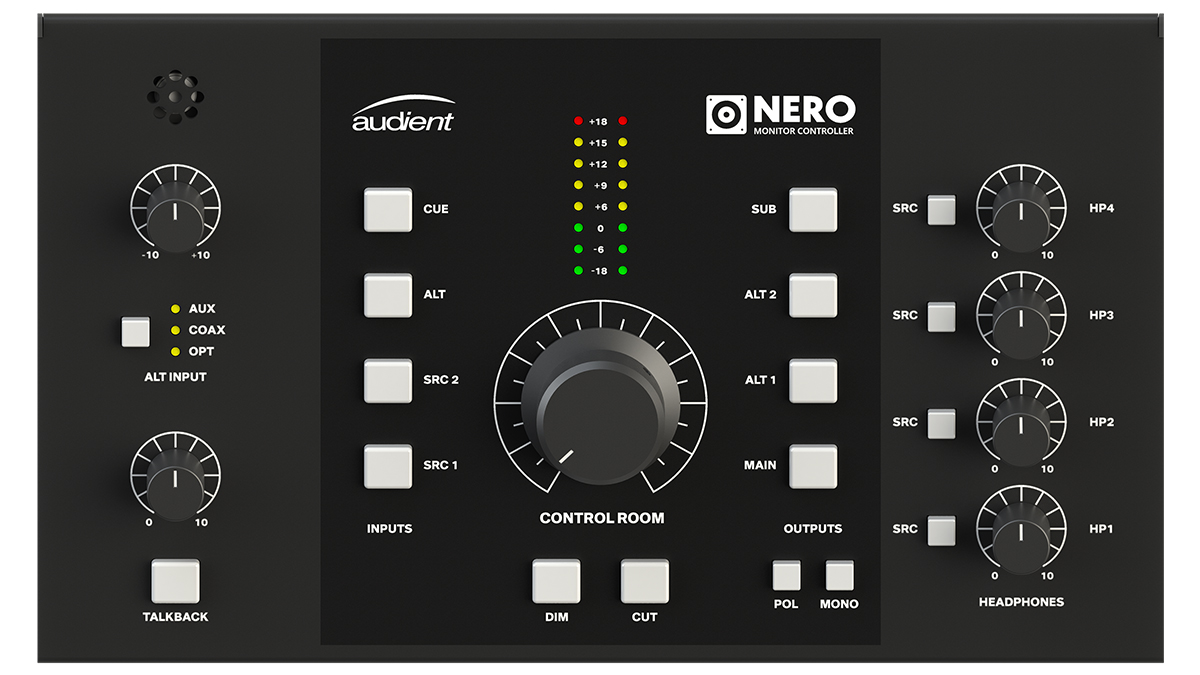
Put simply a monitor controller is a glorified volume knob, however, lots of monitor controllers boast a lot more features than just a volume control. Nowadays it’s expected to have multiple inputs, multiple outputs and much more.
A monitor controller is perfect for anyone who’s looking to expand their monitoring ability. If your current audio interface doesn’t have the ability to switch between speakers, or doesn’t feature vital controls such as dim and cut, then a monitor controller is the perfect addition to your setup.
Here are a few things you should look out for when buying a monitor controller:

1. Inputs and outputs
The most important thing a monitor controller does is enable you to have complete control over your monitoring path. Usually, the most common feature is to send one input source (the sound coming out of your audio interface) out of two-three different sets of monitors. This allows you to reference your mixes through different sets of speakers, meaning you’ll be able to get the best sounding mix possible.
We recommend that this is the key feature you look for when looking for a new monitor controller.

2. Console-style monitor control
The second most important thing when looking for a monitor controller is it having everything you need right there at your fingertips. Having your cut and dim buttons two meters away in a rack, or hidden in software menus is the easiest way to get out of the creative zone, so having them in a place where you can reach them easily is vital.
A good monitor controller will often have Dim, Dim Attenuation, Cut and Mono buttons which are all great features to have whilst mixing.
3. Talkback
There’s nothing more annoying than having to shout at the artist you’re recording through the glass of the control room. Instead, with a talkback mic you’re able to softly whisper into the artist's headphones with no effort at all. A talkback mic is a necessary feature to have on a monitor controller, whether it’s one that’s inbuilt, an XLR input to plug in your own mic, or both.

4. Routing
For the more advanced users, routing is a key feature that should not be overlooked. Being able to send specific inputs to specific outputs, or setting up one speaker to constantly be in mono are small details, but will boost your productivity in the long run.
Our top pick
Audient recently unveiled their new desktop monitor controller, Nero, which covers the above points and more. We particularly like the Smart Touchpoint features, which allow you to have complete control over your monitoring.
There are also some other great features such as it allows you to assign your sub to any set of speakers permanently. The Precision Matched Volume Technology which, unlike other monitor controllers, prevents any deviation in volume between your left and right monitors. There’s also unbalancing your stereo image, which enables you to monitor accurately and mix with confidence.
Want all the hottest music and gear news, reviews, deals, features and more, direct to your inbox? Sign up here.